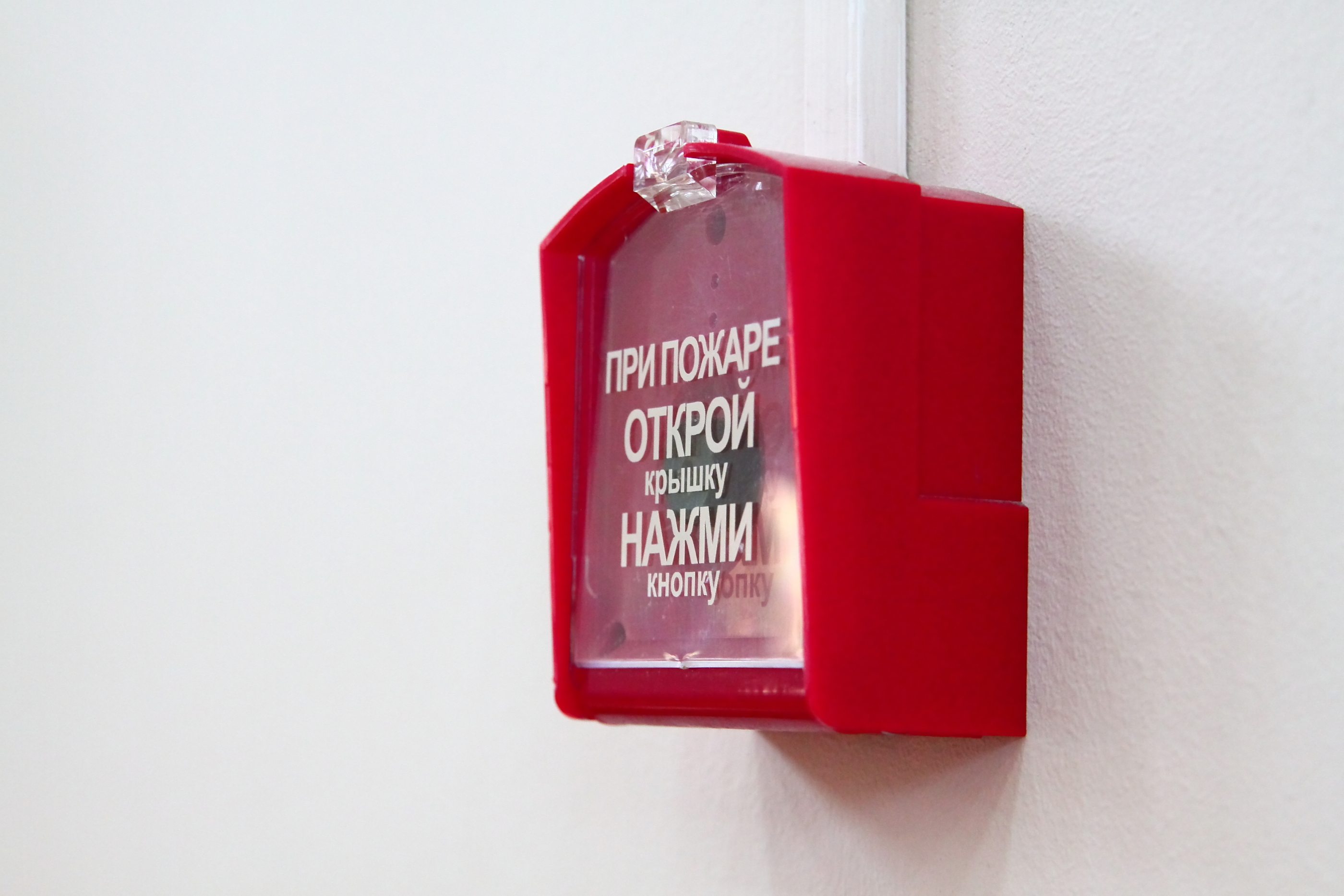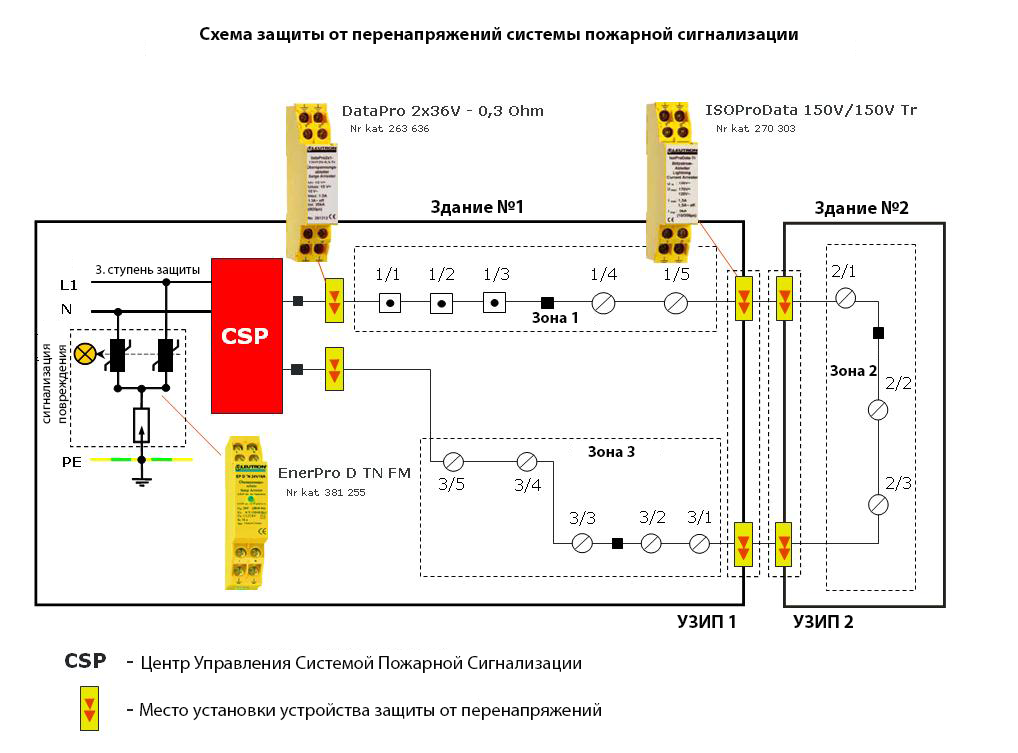
The issues of improving reliability of fire alarm and fire control systems have been focused on recently. This is due to the wide use of large public buildings (tremendous malls, covered stadiums, etc.), high-rise structures as well as increasingly complex equipment used in public areas (e.g. in the theme parks). Note that not only the alarm system failure but also its systematic false triggering are dangerous. But let us have both feet on the ground. As our bitter experience shows, in the conditions when we have to evacuate the visitors without any reason sometimes, which means losing profits, the owners of the locations often choose to turn off the alarm system. When false triggering of the fire control system occurs, a damage in the form of the product spoilage and sometimes even injuries to the personnel and visitors are possible.
Most Sensitive Parts in the Fire Alarm System
To connect the fire alarm and security controller (FASC) in fire alarm systems, RS-232 interface is still being used. Its application is a tribute to the conservatism of the fire alarm manufacturers. The modern PCs do not have this interface anymore; therefore, the USB and RS-232 interface module is used. Connection with RS-232 is one of the most sensitive parts in the system. The point is that such interface does not contain a galvanic junction, which is a reason for its low interference immunity.
The RS-485 interface is much more reliable and provides for the balanced data transmission. This interface is used in the FASC connection lines with the peripheral equipment through the RS-485 interface.
Finally, as well as for another equipment, the fire alarm system and the automatic fire control systems are sensitive to power quality. These can be both 12 and 24 V DC lines going from the accumulator (power unit) and 230 V AC lines. From the 230 V line, the power unit of the fire control system is protected pretty well. And the voltage of the 12 or 24 V DC lines is typically supplied to electrical circuits directly. Due to this, pulse interference may penetrate the control automation equipment.
Regulatory Base
Failure or malfunction of the fire control system as a result of the lightning exposure is not allowable due to the fact that many fires are caused by the lightning. GOST IEC R 62305-2-2010, which is an adaptation of international standard IEC 62305-2 /en/library/webinars/webinar-international-electrotechnical-standard-iec-62305-general-principles-page-2/, states directly that fire control systems may only reduce the fire risk because of the lightning if they are protected from the lightning exposure.
Since 2009, in Russia, the Code SP 5.13130.2009 Fire Safety Systems. Automatic Installations of Fire Alarm and Control Systems. Design Standards and Rules approved by the Ministry of Emergency has been effective. They recommend to use, in the fire alarm flat cables, the wires designed for the communications, and if the line voltage does not exceed 60 V, the use of the phone wires with copper cores is allowed. Also, SP 5.13130.2009 describes the means to protect cables from the potential electromagnetic impact (e.g. it is recommended to use the earthed screens for the wires), but it means the interference in general (e.g. from the operating electrical equipment) without the particular detailing of the cases associated with the lightning impact.
The Shielded Cable Application is a Method of the Automated Equipment Protection against the Secondary Lightning Impact
However, currently, technical guidelines are primary documents used for technical regulation. Federal law No. 123-FZ of July 22, 2008 (as amended on December 27, 2018) has made effective the Technical Regulations of Fire Safety Requirements. These Regulations do not contain any requirements for the mandatory protection of fire alarm means and automated fire control means against the lightning impact. There is only an indication on that the fire control installations should provide an adequate reliability level.
The Technical Regulations of the European Economic Union (EAEU TR) have a priority compared to the technical regulations. In 2017, EAEU TR 043/2017 On Requirements to Fire Safety and Control Systems was adopted. The only clause describing the electromagnetic impact is item 33 "The technical means operating as part of the fire automation systems should provide the electrical and information compatibility with each other as well as with other interacting technical means". However, these TRs allow for the manufacturer of the fire safety equipment to voluntarily take an obligation to comply with the standards and rules of a particular country.
Protection Means
Thus, the effective regulatory base does not provide for a ready-made algorithm of the protection of the fire alarm means and other automated fire safety equipment against the electromagnetic pulses caused by lightning. We can briefly recommend the following measures:
- Development of an external lightning protection system for the building (object) and a high-quality earthing device for draining the pulse lightning currents.
- Shielding of the equipment and lines, along which the information is transmitted, against the interference caused by the lightning current flowing along the structures, the lightning protection elements, and other conductors.
- Attachments to the main earthing bus (MEB) using potential-equalizing conductors of all metal elements and equipment parts except for the current and signal conductors.
- Installation of the devices for protection against the pulse overvoltage (surge protection device, SPD) on all lines of the object (or separate equipment).

Diagram of protection of the fire alarm system against overvoltage
Схема защиты от перенапряжений системы пожарной сигнализации - Diagram of protection of the fire alarm system against overvoltage
Здание № 1 - Building No. 1
Здание № 2 - Building No. 2
Зона 1 - Zone 1
Зона 2 - Zone 2
Сигнализация повреждения - Failure alarm
Зона 3 - Zone 3
УЗИП 1 - SDP 1
УЗИП 2 - SDP 2
Центр управления системой пожарной сигнализации - Fire alarm control panel
Место установки устройства защиты от перенапряжений - Location of a surge protective device
Example of the Fire Alarm System Protection Using SPDs
Clauses 1 to 3 are implemented in a typical way through using the ZANDZ earthing equipment, shielded cables and special enclosures for the equipment.
Clause 4 requires the use of SPDs specifically designed for the fire alarm systems. The main requirement is that the SPD should not change the level of the transmitted signal or introduce any distortions therein. The SPD parameters are governed by GOST IEC R 61643-21-2014 Low Voltage Surge Protection Devices. Part 21. Surge Protection Devices Connected to Telecommunications and Signalling Networks. Performance Requirements and Testing Methods. For example, limiters of series RST SAP /en/tovar/7/6/. conform to this standard. Such limiters are designed for a low rated current 1.5 or 3A, and they have a low value of serial resistance (0.33 Ohm or 0.07 Ohm).
Conclusions
During the design of the lightning protection for the fire alarm system and the automated fire control systems, a situation is observed when single standards are lacked. The departmental instructions mean much in this issue. There are some nuances associated with the reorganization of the standardization system and transition to the technical regulations of the Eurasian Economic Union. In these situation, it is better to contact qualified specialists. When you contact the ZANDZ Technical Center, you will receive a consultation to protect against the lightning the fire control systems that conform to the current standards, including the departmental ones.
Related Articles:
 2019 ZANDZ Competition for the Best Earthing System and Lightning Protection
2019 ZANDZ Competition for the Best Earthing System and Lightning Protection



